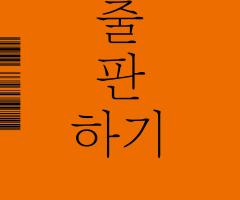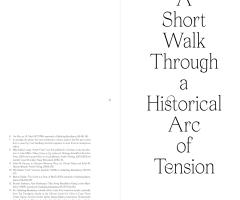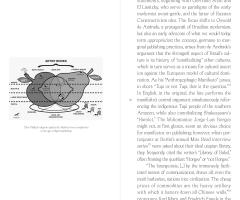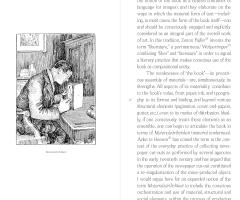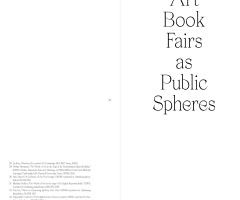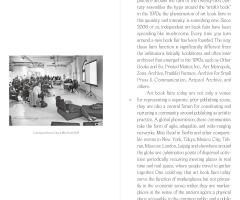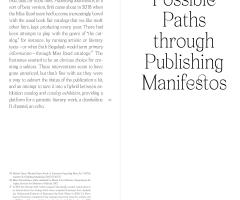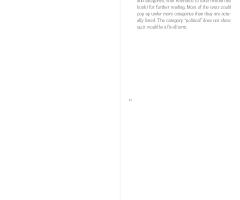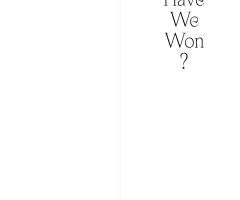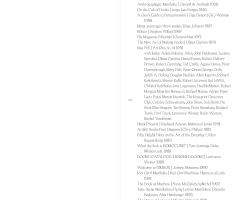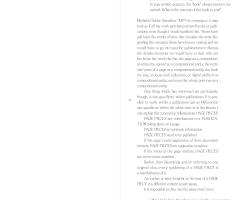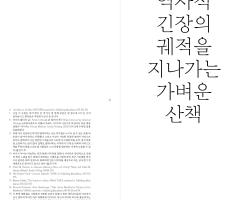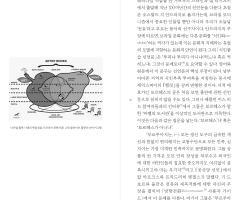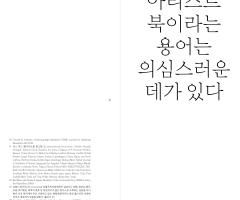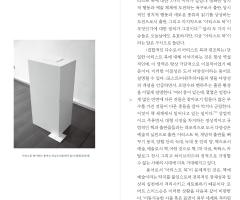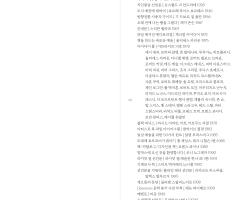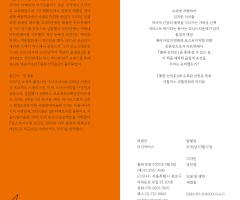Publishing Publishing Manifestos
Seoul: mediabus, 2019
105 x 210 mm, 152 pp.
Offset, perfect binding
Book introduction
The second book in the Mediabus Manifesto series is a translation of the introduction to Publishing Manifestos (MIT Press, 2019), edited by German author and co-founder of Miss Read, Berlin Art Book Fair. This essay comprises 10 short chapters, from the description of the historical background of the 87 manifestos gathered, to the practice, the necessity and meaning of publishing, and the new publishing movement to lose its original vitality by commercial galleries, corporations, and institutions. It deals with a variety of issues, including concerns about the processes being done. It also briefly describes technical possibilities such as POD in the post-digital era and art book fairs that are prominent as new book spaces.
Instead of the missing 87 proclamations that correspond to the text of the original book, Publishing Publishing Manifestos contains an interview with the author for Korean readers, along with a bibliography of the manifestos.
Contents
Against Alienation
Seriosity Dummies
A Short Walk Through a Historical Arc of Tension
Artist’s Book as a Term Is Problematic
Materialzärtlichkeit
Paradigm Shift and Postdigital Turn
Art Book Fairs as Public Spheres
Possible Paths through Publishing Manifestos
Material Conditions of Producing This Book
Have We Won?
Appendix
Bibliography of Manifestos included in Publishing Manifestos
Interview with Michalis Pichler
About the author:
Michalis Pichler is an artist and writer based in Berlin. (website) He was educated as a sculptor in the Acropolis Preservation Site in Athens, and received diplomas in Architecture from TU Berlin and Art from the Weissensee Art School Berlin. He was a founder of Miss Read, the Berlin Art Book Fair, in 2009 and established “Conceptual Poetic Day” in 2013. Recently held solo exhibitions at New York’s Printed Matter and Kunstverein Milano. In 2015, Printed Matter and Spector Books jointly published his monograph, Thirteen Years: The Materialization of Ideas from 2002 to 2015.
About the translator:
In 2007, Kyung Yong Lim established the publishing imprint Mediabus and in 2010 bookstore and project space The Book Society. Other projects include Xerox Project (Nam June Paik Art Center, 2015), Artists Documents: Art, Typography and Collaboration (Co-planning, National Museum of Modern and Contemporary Art, 2016), Seoul Media City Biennale 2018 (Corrective Director, Seoul Museum of Art, 2018 ). Translated “Post Digital Print” (Alessandro Ludovico, Mediabus, 2017).
Excerpts from the book
“The economics of publishing are a concern, both in terms of production and sustenance. Can one pay to print? Can one pay the rent—not just for a studio, but also for housing? When making books and/or art, is one living for orfrom it? Why does everybody always want to prove that one’s own publishing activity pays for itself, that one does (or at least theoretically could) “break even”? Does this desire arise from mere optimism, or naiveté, or does it betray a more emancipative impulse? As Tauba Auerbach puts it: “It’s not a priority to make it work financially, other than the fact that I would like to prove to myself that it’s possible to have a viable business that isn’t compromised.” (page 5)
“Artist’s book” as a term is problematic because it ghettoizes, enforces the separation from broader everyday practices and limits the subversive potential of books by putting an art tag on them. Robert Smithson discusses this process of cultural confinement when he critiques the “portable object or surface disengaged from the outside world [...] Once the work of art is totally neutralized, ineffective, abstracted, safe, and politically lobotomized, it is ready to be consumed by society. All is reduced to visual fodder and transportable merchandise.” (page 22)
“A book with a spine is more serious than a stapled one. A big publisher is more serious than a small publisher. Fighting against that gravity, certain communities have adopted an aesthetic announcing their anti-serioist stance, such as self-publishing on POD-platforms, circulating the PDF for free, and opting for a generic layout even in hard copy production, with cheap materials and technically non-exquisite execution. In the process, they acknowledge in the logic of post-Benjaminian regime that “digital—and of course not only digital—reproducibility eludes the whole sphere of limitation.” (Page 32)
“The role of book fairs is thus somewhat a paradox, oscillating between creating open spaces for critical debates on the one hand and being primary examples of neoliberal event-driven culture on the other hand. At the same time, larger art fairs have been increasingly eager to embrace book-fair sections under their roofs as a sort of intellectual fig-leaf.” (page 38)
“We have reached a privileged historical moment when running a publishing house—or a book fair—can be (an) art work. At the same time, it is Sozialarbeit (social work), “a mode of production analogous not to the creation of material goods but to the production of social contexts." (page 59)
책 소개
미디어버스 선언문 시리즈의 두 번째 책으로 독일 출신의 작가이자 베를린아트북페어 미스 리드(Miss Read)의 공동 창립자인 미할리스 피힐러가 편집한 『출판 선언문』(MIT Press, 2018)의 서문만 번역한 것이다.
이 서문은 10개의 짧은 글로 이뤄졌는데, 여기에 모은 87개의 선언문이 속한 역사적인 배경에 대한 설명부터 실천으로 출판의 필요성과 의미, 새로운 출판 운동이 상업 갤러리나 기업, 기관에 의해 원래의 활력을 상실하게 되는 과정들에 대한 우려 등 다양한 이슈를 다룬다. 또한 포스트디지털 시대 POD와 같은 기술적 가능성을 비롯해 새로운 책 공간으로 두각을 나타내고 있는 아트북페어 등도 짧게 설명하고 있다.
원래 책의 본문에 해당하는 87개의 선언문이 빠져 있는 대신 선언문의 목록과 함께 한국 독자들을 위한 저자와의 인터뷰가 이 책에 수록되어 있다.
목차
소외에 저항하며
진지한 더미들
역사적 긴장의 궤적을 지나가는 가벼운 산책
물질적 애정
공론장으로서 아트북페어
이 책을 제작한 물질적 조건들
「출판 선언문」에 수록된 선언문 목록
아티스트 북이라는 용어는 의심스러운데가 있다
패러다임의 변화와 포스트디지털 전회
「출판 선언문」을 통해 갈 수 있는 길
우리는 승리했는가?
부록
「출판 선언문」에 수록된 선언문 목록
미할리스 피힐러와의 인터뷰
저자 소개
미할리스 피힐러
미할리스 피힐러는 베를린에 거주하는 예술가이자 작가이다. 아테네의 아크로폴리스 보존 구역에서 조각가로 교육받았으며, TU 베를린에서 건축과 베를린 바이센제 예술학교에서 미술로 학위를 받았다. 2013년 ‘컨셉츄얼 포에틱 데이’를, 2009년에는 베를린 아트북페어인 미스 리드를 공동으로 설립했다. 2019년에는 아테네 아트북페어를 시작했다. 최근 뉴욕의 프린티드 매터와 밀라노 예술협회에서 개인전을 했다. 2015년 프린티드 매터와 스펙터 북스에서 공동으로 그의 모노그라프인 「13년: 2002년부터 2015년까지 개념의 물질화」를 출판하였고, 2019년에는 미스 리드와 MIT 프레스를 통해 자신의 앤솔로지인 『출판 선언문』이 출간되었다.
역자 소개
임경용
2007년 소규모 출판사인 미디어버스와 2010년 서점이자 프로젝트 스페이스인 더 북 소사이어티를 구정연과 공동으로 설립했다. 《제록스 프로젝트》(백남준 아트센터, 2015), 《예술가의 문서들: 예술, 타이포그라피 그리고 협업》(공동기획, 국립현대미술관, 2016), 서울미디어시티 비엔날레 2018(콜렉티브 디렉터, 서울시립미술관, 2018) 등의 전시나 프로젝트를 기획했다. 「포스트디지털 프린트」(알레산드로 루도비코, 미디어버스, 2017) 등을 번역했다.
책 속에서
“출판의 경제학은 제작과 유지라는 측면에서 볼 때 걱정거리가 된다. 인쇄비를 낼 돈이 있나? 작업실뿐 아니라 집세는 낼 수 있을까? 책이나 작품을 만들 때 사람들은 그것을 위해 사는가? 아니면 그로부터 생계를 유지하는가? 왜 모든 사람들은 항상 자신의 출판 활동으로 그 돈을 모두 지불할 수 있을 것이라고 믿을까? 최소한 제작비는 건질 수 있을 것이라고 기대하는가? 이러한 욕망은 그냥 낙관주의에서 나오는 것인가 아니면 그냥 순진한 것인가 아니면 이것은 자기 표현의 충동을 져버리게 하는가? 타우바 아우어바흐는 이렇게 밝힌다. “재정적으로 잘 운영한다는 것이 가장 우선적인 가치는 아니다. 다만 타협하지 않은 채 독자적으로 생존 가능한 사업을 가질 수 있다는 것을 스스로 증명하고 싶었다.” (5쪽)
“용어로서 “아티스트 북”이 문제적인 것은, 책에 예술이라는 딱지를 붙임으로써 전복적인 잠재성과 일상의 실천에서 격리시키고 게토화하기 때문이다. 로버트 스미스슨은 이러한 상황을 다음과 같이 비판한다. “이동가능한 사물 혹은 표면이 외부 세계와 격리된다. 예술 작품이 완전하게 중성화되고 영향력이 없어지며 추상화되고 안전해지고 정치적으로 생기가 없어졌을 때, 사회에서 소비할 준비를 마친 것이다. 모든 것은 시각적인 사료와 이동 가능한 상품으로 축소된다.” (22쪽)
“책등이 있는 책은 중철 제본된 책보다 더 심각하다. 큰 출판사는 작은 출판사보다 더 심각하다. 이러한 중력에 저항해 싸우는 몇몇 공동체들은 자신의 반 심각주의적 입장에 대한 미학적 발언을 하곤 한다. 이를테면 POD 플랫폼에서 PDF를 무료로 유통하거나 값싼 재료나 기술적으로 정교하지 않은 기법으로 인쇄된 책을 만드는 자주 출판사도 있다. 이러한 과정에서 그들은 포스트벤야민 시대의 논리가 “디지털뿐만 아니라 재생산성이 한계의 모든 영역을 배제한다는 사실”을 인지한다.” (32쪽)
“북페어의 역할은 그러므로 어느 정도 역설적이다. 비평적 논의를 위한 열린 공간을 만드는 것과 신자유주의적 이벤트의 중요한 사례에서 흔들리고 있다. 동시에 더 큰 아트 페어들은 점점 더 북페어 섹션을 포함시키고 싶어하고, 미술관들은 이러한 페어들을 유치함으로써 방문자와 함께 이들이 가진 에너지를 가져오는 것에 혈안이 되어 있다.” (38쪽)
“우리는 출판사나 북페어를 운영하는 것이 예술 작업이 될 수 있는 특별한 역사적 순간에 도달했다. 동시에 이것은 사회적 작업이다. “제작 양식은 물질적 제품이 아니라 사회적 맥락을 만드는 것과 유사하다.”(세스 프라이스) (59쪽)
